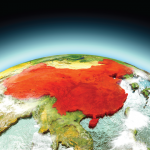Richard Lai, a rheumatologist at the Great Falls Clinic in Great Falls, Mont., some 125 miles south of the Canadian border, says that winter months can decrease office visits. Patients often cancel appointments because of weather concerns. He also knows little can be done for worsening symptoms during the winter. The few options include increasing the dosage of existing medication(s) and prescribing topical anti-inflammatory gels.
Additional research delving into the links between the environment and RA could help identify potential treatment avenues and prevention options.
“I don’t think a lot of studies are done in colder climates,” says Dr. Lai. “[And] I don’t think a lot of studies have been published to address colder symptoms in terms of treatment—how to manage it better. A lot of times, we go with the guidelines nowadays: stay warm, make sure you take your medicine [and] watch your rheumatoid joint symptoms. But that’s pretty much the extent of how we approach this group of patients. More research would undoubtedly be helpful as far as what to predict, do we have to provide other medicine when it is colder to prevent the flare up, the symptoms or anything.”
The dearth of evidence on the association between working in cold environment and developing rheumatic or musculoskeletal disease has some rheumatologists skeptical of how large a role environment plays in pathology.
“Look, for the autoimmune diseases, the major factor is the immune system,” says Steven Vlad, MD, a rheumatologist at Tufts Medical Center in Boston. “The pathology that causes the autoimmunity, the process the causes the inflammation … things like weather may play a role, but I think that role tends to be minor and probably influences to a certain extent what patients feel.”
Dr. Vlad notes that what patients believe must be taken seriously, particularly as it relates to concerns with weather during the winter months. He also cautions that physicians must be careful with patients who suffer from Raynaud’s phenomenon in which reduced blood flow—often triggered by cold weather—causes numbing of fingers and other areas of the body.
Although rheumatologists eagerly await more research correlating the effect of environment on the development of rheumatic disease, they counsel existing patients to be careful during colder temperatures. Techniques include exercising indoors as much as possible, covering up extremities when outdoors and avoiding exposure to the most hazardous conditions.
“You have to keep warm,” Dr. Vlad says. “And keeping warm doesn’t just mean wearing gloves or boots. … It often means keeping your core warm and making sure that, by keeping your core warm, you maintain circulation.”

